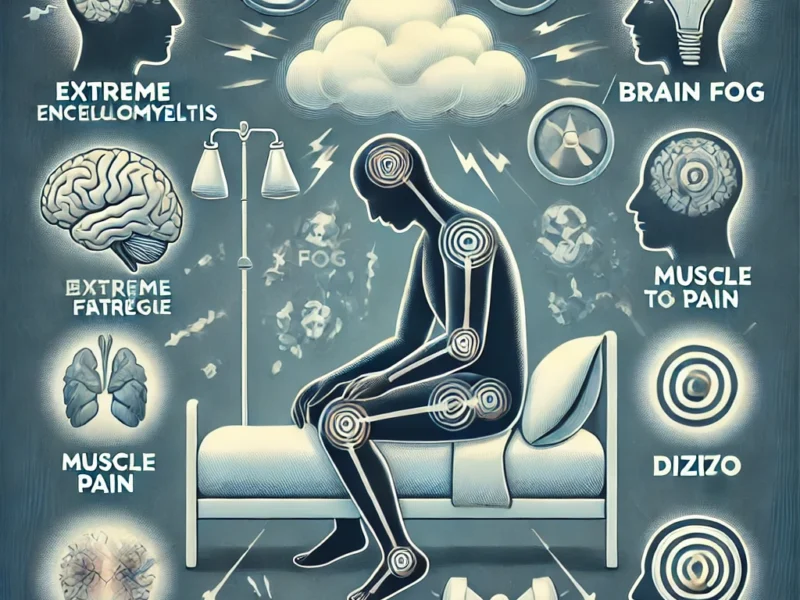Vision is one of the most critical senses for human interaction with the world, yet millions worldwide suffer from various vision impairments. Research in eye vision improvement spans diverse approaches, including medical treatments, technological advancements, lifestyle interventions, and genetic therapies. This article delves into the latest advancements and ongoing research in improving eye vision, providing a comprehensive overview of the field.
The Importance of Vision Health
Vision impairments, ranging from mild issues like myopia (nearsightedness) to severe conditions like age-related macular degeneration (AMD) and glaucoma, significantly impact quality of life. Estimates from the World Health Organisation (WHO) indicate that at least 2.2 billion people are blind or visually impaired in some capacity. With the aging global population, these numbers are expected to rise, highlighting the need for effective vision improvement strategies.
Advances in Medical Treatments
1. Pharmacological Interventions
One of the primary focuses of vision improvement research is the development of pharmacological treatments. These include medications that can slow down or reverse the progression of eye diseases.
Anti-VEGF Therapy:
The management of diabetic retinopathy and neovascular age-related macular degeneration has seen a significant revolution, partly due to the use of vascular endothelial growth factor (VEGF) inhibitors. Ranibizumab (Lucentis) and aflibercept (Eylea) are medications that may halt the growth of aberrant blood vessels in the retina, hence maintaining eyesight.
Neuroprotective Agents:
For glaucoma, researchers are exploring neuroprotective agents that can protect retinal ganglion cells from damage. One promising agent is brimonidine, which has shown potential in reducing cell death and preserving vision.
2. Gene Therapy
Gene therapy represents a cutting-edge approach to treating genetic forms of blindness. This technique involves correcting or replacing defective genes responsible for eye diseases.
Luxturna (voretigene neparvovec):
Approved by the FDA in 2017, Luxturna is a groundbreaking gene therapy for patients with biallelic RPE65 mutation-associated retinal dystrophy. By delivering a normal copy of the RPE65 gene directly into retinal cells, Luxturna helps restore the production of an essential protein for vision, significantly improving visual function in affected individuals.
CRISPR-Cas9:
This revolutionary gene-editing technology is being researched for its potential to treat inherited retinal diseases. By precisely editing faulty genes, CRISPR-Cas9 could offer permanent solutions to conditions like retinitis pigmentosa and Leber congenital amaurosis.
3. Stem Cell Therapy
Stem cell therapy holds promise for regenerating damaged retinal cells. Researchers are investigating the use of pluripotent stem cells to develop retinal pigment epithelial cells and photoreceptors that can be transplanted into patients’ eyes.
Human Embryonic Stem Cells (hESCs):
Researchers have found that retinal cells made from human embryonic stem cells (hESC) can successfully grow into damaged retinas and help recover some of the function of the eyes. At the moment, research studies are being done to improve these methods and make sure they are safe and successful.
Technological Innovations
1. Retinal Implants and Prosthetics
For individuals with severe vision loss or blindness, retinal implants and prosthetics offer hope for restoring partial vision. These gadgets create electrical impulses that the brain can understand, which convert visual data.
The Argus II Retinal Prosthesis System:
The Argus II, sometimes referred to as the “bionic eye,” consists of a camera-equipped pair of spectacles and a retinal implant. This technology aids those suffering from severe retinitis pigmentosa by enhancing their visual perception, enabling them to see shapes and motions.
Artificial Intelligence (AI) and Machine Learning:
Artificial intelligence and machine learning enhance the functionality of retinal implants. The image processing capabilities of these technologies might be improved, resulting in the delivery of clearer and more valuable visual information for patients using the implanted devices.
2. Advanced Diagnostic Tools For Eye Vision
It is critical to make a prompt diagnosis of ocular disorders in order to prevent the development of visual impairment. Innovative diagnostic tools are making it possible to identify illnesses in their early stages, while they are still in the process of developing.
Optical Coherence Tomography (OCT):
Optical coherence tomography (OCT) is a non-invasive imaging technique that generates high-resolution cross-sectional pictures of the retina. It enables early detection of disorders such as glaucoma, diabetic retinopathy, and age-related macular degeneration (AMD), facilitating prompt treatment.
Artificial Intelligence in Diagnostics:
AI algorithms are being developed to analyze OCT images and other diagnostic data with high accuracy. These systems can detect subtle changes that may be missed by human observers, facilitating earlier diagnosis and treatment.
Lifestyle and Nutritional Interventions
1. Nutritional Supplements
Diet and nutrition play a crucial role in maintaining eye health. Research has shown that certain nutrients can help protect against vision loss.
Antioxidants:
Vitamins C and E, beta-carotene, and zinc have been shown to reduce the risk of advanced AMD. The Age-Related Eye Disease Study (AREDS) and its follow-up, AREDS2, provided strong evidence supporting the use of these antioxidants in slowing the progression of AMD.
Omega-3 Fatty Acids:
Found in fish oil, omega-3 fatty acids have anti-inflammatory properties that can benefit individuals with dry eye syndrome and possibly reduce the risk of AMD.
2. Blue Light and Digital Eye Strain
Concerned about the exposure to blue light and the strain digital devices inflict on the eyes, more individuals are starting to worry. Researchers are studying the effects of blue light and developing strategies to mitigate its impact on eye health.
Blue Light Blocking Glasses:
These glasses filter out blue light from screens, potentially reducing digital eye strain and improving sleep quality. While research on their effectiveness is ongoing, some studies suggest they may help alleviate discomfort associated with prolonged screen use.
Screen Time Management:
To reduce the strain that digital eye strain creates, try following the 20-20-20 rule: after 20 minutes, take a 20-second break and look at anything 20 feet away. Research supports the effectiveness of such practices in maintaining eye comfort and health.
Surgical Interventions In Eye Vision
1. Refractive Surgery
Refractive surgery, such as LASIK and PRK, corrects vision by reshaping the cornea, allowing light to focus properly on the retina. These procedures are widely used to treat myopia, hyperopia, and astigmatism.
LASIK (Laser-Assisted In Situ Keratomileusis):
LASIK uses a laser to create a flap in the cornea and reshape the underlying tissue. It offers rapid recovery and excellent visual outcomes for many patients.
PRK (Photorefractive Keratectomy):
PRK requires the removal of the outer layer of the cornea and subsequent reshaping of the corneal tissue. This technique may be advantageous for persons with thinner corneas, who may not be suitable candidates for LASIK.
2. Cataract Surgery
Cataracts, a common age-related condition, cause clouding of the eye’s lens, leading to vision impairment. Cataract surgery is a medical technique that involves removing the cloudy lens and replacing it with an artificial intraocular lens (IOL).
Advanced Intraocular Lenses for Eye Vision:
Modern IOLs come with various enhancements, such as multifocal lenses that improve vision at multiple distances and toric lenses that correct astigmatism. These advancements enhance postoperative visual outcomes and patient satisfaction.
Emerging Research and Future Directions For Eye Vision
Continuous research is always pushing the boundaries of what is possible in the rapidly evolving field of vision improvement. There are many growing disciplines that hold promise for future breakthroughs.
1. Regenerative Medicine For Eye Vision
Regenerative medicine aims to restore damaged tissues and organs through the body’s own repair mechanisms or through biomedical interventions.
Induced Pluripotent Stem Cells (iPSCs):
iPSCs, derived from adult cells, have the potential to develop into any cell type. Research is exploring their use in generating retinal cells for transplantation, offering hope for treating conditions like AMD and retinitis pigmentosa.
2. Retinal Regeneration
Scientists are investigating ways to stimulate the regeneration of retinal cells, potentially reversing vision loss caused by damage to the retina.
Gene Editing for Regeneration:
Using technologies like CRISPR-Cas9, researchers aim to activate genes that promote retinal cell regeneration. This approach could lead to novel treatments for a range of degenerative eye diseases.
3. Nanotechnology
Nanotechnology involves manipulating materials on an atomic or molecular scale to create new devices and therapies.
Nanoparticles for Drug Delivery:
Nanoparticles can deliver drugs directly to specific cells in the eye, enhancing the efficacy and reducing the side effects of treatments for diseases like glaucoma and AMD.
Nano-Retina Implants:
Researchers are developing nano-scale retinal implants that can provide higher resolution and better integration with existing neural networks compared to current retinal prosthetics.
Conclusion
Research into eye vision improvement is a multifaceted field encompassing medical treatments, technological innovations, lifestyle interventions, and cutting-edge scientific research. The advancements in pharmacological treatments, gene and stem cell therapies, and technological tools are transforming the landscape of vision care, offering hope for millions affected by vision impairments. As research progresses, the integration of emerging technologies and therapies promises to further enhance our ability to preserve and restore vision, improving the quality of life for people worldwide. The future of vision improvement looks promising, with continued innovation driving towards more effective and accessible solutions.
Research Source:
Other Supportive Research Sources:
Eye and Vision Health: Recommendations and a Path to Action
Improving and Enhancing U.S. Vision & Eye Health Surveillance
PreserVision: A Comprehensive Guide to Eye Health


Thank you for such helpful information.